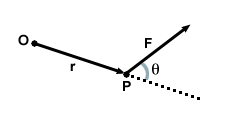Please wait while we process your payment
If you don't see it, please check your spam folder. Sometimes it can end up there.
If you don't see it, please check your spam folder. Sometimes it can end up there.
Please wait while we process your payment
Get instant, ad-free access to our grade-boosting study tools with a 7-day free trial!
Learn more



This site is protected by reCAPTCHA and the Google Privacy Policy and Terms of Service apply.
Create Account
Select Plan
Payment Info
Start 7-Day Free Trial!

Annual
2-49 accounts
$22.49/year + tax
50-99 accounts
$20.99/year + tax
Select Quantity
Price per seat
$29.99 $--.--
Subtotal
$-.--
Want 100 or more? Request a customized plan
You could save over 50%
by choosing an Annual Plan!

SAVE OVER 50%
compared to the monthly price!
| Focused-studying | ||
| PLUS Study Tools | ||
| AP® Test Prep PLUS | ||
| My PLUS Activity | ||
$22.49/month + tax
Save 25%
on 2-49 accounts
$20.99/month + tax
Save 30%
on 50-99 accounts
| Focused-studying | ||
| PLUS Study Tools | ||
| AP® Test Prep PLUS | ||
| My PLUS Activity | ||
No Fear provides access to Shakespeare for students who normally couldn’t (or wouldn’t) read his plays. It’s also a very useful tool when trying to explain Shakespeare’s wordplay!
Erika M.
I tutor high school students in a variety of subjects. Having access to the literature translations helps me to stay informed about the various assignments. Your summaries and translations are invaluable.
Kathy B.
Teaching Shakespeare to today's generation can be challenging. No Fear helps a ton with understanding the crux of the text.
Kay H.
No Fear provides access to Shakespeare for students who normally couldn’t (or wouldn’t) read his plays. It’s also a very useful tool when trying to explain Shakespeare’s wordplay!
Erika M.
I tutor high school students in a variety of subjects. Having access to the literature translations helps me to stay informed about the various assignments. Your summaries and translations are invaluable.
Kathy B.
Teaching Shakespeare to today's generation can be challenging. No Fear helps a ton with understanding the crux of the text.
Kay H.
Create Account
Select Plan
Payment Info
Start 7-Day Free Trial!
You will only be charged after the completion of the 7-day free trial.
If you cancel your account before the free trial is over, you will not be charged.
You will only be charged after the completion of the 7-day free trial. If you cancel your account before the free trial is over, you will not be charged.
Order Summary
Annual
7-day Free Trial
SparkNotes PLUS
$29.99 / year
Annual
Quantity
51
PLUS Group Discount
$29.99 $29.99 / seat
Tax
$0.00
SPARK25
-$1.25
25% Off
Total billed on Nov 7, 2024 after 7-day free trail
$29.99
Total billed
$0.00
Due Today
$0.00
Promo code
This is not a valid promo code
Card Details
By placing your order you agree to our terms of service and privacy policy.
By saving your payment information you allow SparkNotes to charge you for future payments in accordance with their terms.
Powered by stripe
Legal
Google pay.......



Please wait while we process your payment

Sorry, you must enter a valid email address
By entering an email, you agree to our privacy policy.
Please wait while we process your payment

Sorry, you must enter a valid email address
By entering an email, you agree to our privacy policy.
Please wait while we process your payment

Your PLUS subscription has expired
Please wait while we process your payment
Please wait while we process your payment

Work, Energy and Combined Motion
Having established the dynamics of rotational motion, we can now extend our study to work and energy. Given what we already know, the equations governing energetics are quite easy to derive. Finally, with the equations that we have derived, we will be able to describe the complicated situations involving combined rotational and translational motion.
Given our definition of work as W = Fs, can we generate an expression for work done on a rotational system? To derive our expression we begin by taking the simplest case: when the force applied to a particle in rotational motion is perpendicular to the radius of the particle. In this orientation, the force applied is parallel to the displacement of the particle, and would exert the maximum work. Given this situation the work done is simply W = Fs, where s is the arc length that the force acts through in a given period of time. Recall, however, that arc length can also be expressed in terms of the angle swept out by the arc: s = rμ. Our expression for work in this simple case becomes:
| W = Frθ = τμ |
What if the force is not perpendicular to the radius of the particle? Let the
angle between the force vector and the radius vector be θ, as shown
below.

For you calculus types, there is also an equation for work done by variable torques. Instead of deriving it, we can just state it, as it is quite similar to the equation in the linear case:
W =  τdμ τdμ |
Thus we have quickly gone through deriving our expression for work. The next thing after work we studied in linear motion was kinetic energy, and it is to this topic that we turn.
Consider a wheel spinning in place. Clearly the wheel is moving, and has a kinetic energy attached to it. But the wheel is not engaged in translational motion. How do we calculate the kinetic energy of the wheel? Our answer is similar to how we calculated the result of a net torque on a body: by summing over each particle.
Please wait while we process your payment





